| Listing 1 - 9 of 9 |
Sort by
|
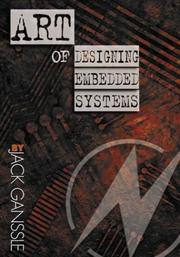
ISBN: 0750698691 9780080499352 008049935X 9780750698696 Year: 2000 Publisher: Boston, Mass. Newnes
Abstract | Keywords | Export | Availability | Bookmark
 Loading...
Loading...Choose an application
- Reference Manager
- EndNote
- RefWorks (Direct export to RefWorks)
Art of Designing Embedded Systems is apart primer and part reference, aimed at practicing embedded engineers, whether working on the code or the hardware design. Embedded systems suffer from a chaotic, ad hoc development process. This books lays out a very simple seven-step plan to get firmware development under control. There are no formal methodologies to master; the ideas are immediately useful. Most designers are unaware that code complexity grows faster than code size. This book shows a number of ways to linearize the complexity/size curve and get products out faster. Ganssle shows ways to get better code and hardware designs by integrating hardware and software design. He also covers troubleshooting, real time and performance issues, relations with bosses and coworkers, and tips for building an environment for creative work. Get better systems out faster, using the practical ideas discussed in Art of Designing Embedded Systems. Whether you're working with hardware or software, this book offers a unique philosophy of development guaranteed to keep you interested and learning. * Practical advice from a well-respected author * Common-sense approach to better, faster design * Integrated hardware/software.
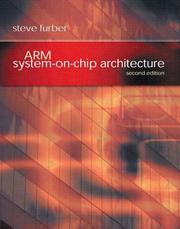
ISBN: 0201675196 9780201675191 Year: 2000 Publisher: London Addison-Wesley
Abstract | Keywords | Export | Availability | Bookmark
 Loading...
Loading...Choose an application
- Reference Manager
- EndNote
- RefWorks (Direct export to RefWorks)
Computer architecture. Operating systems --- chips --- microprocessoren --- embedded systems --- processoren --- mobiele communicatie --- Computerarchitectuur --- RISC (Microprocesadores). --- Arquitectura de computadoras. --- Computerarchitectuur.
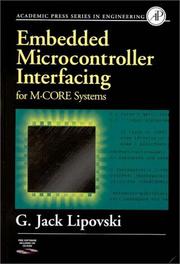
ISBN: 1281038407 9786611038403 0080505562 012451832X Year: 2000 Publisher: San Diego : Academic Press,
Abstract | Keywords | Export | Availability | Bookmark
 Loading...
Loading...Choose an application
- Reference Manager
- EndNote
- RefWorks (Direct export to RefWorks)
The ""M·CORE"" family of microprocessors is the latest 32-bit integrated circuit from Motorola designed to be a multi-purpose ""micro-controller."" The processor architecture has been designed for high performance and cost-sensitive embedded control applications with particular emphasis on reduced power consumption. This is the first book on the programming of the new language instruction set using the M·CORE chip.Embedded Microcontroller Interfacing for M·CORE Systems is the third of a trio of books by G. Jack Lipovski from the University of Texas. The first two books are on assemb
Programmable controllers. --- Motorola 68HC12 (Microprocessor) --- Embedded computer systems. --- Computer interfaces. --- Interfaces, Computer --- Embedded systems (Computer systems) --- Controllers, Programmable --- Computer input-output equipment --- Interface circuits --- Computer systems --- Architecture Analysis and Design Language --- Electronic controllers --- Automatic control

ISBN: 0750698691 9780080499352 008049935X 9780750698696 1281047848 9786611047849 9781281047847 Year: 2000 Publisher: Boston : Newnes,
Abstract | Keywords | Export | Availability | Bookmark
 Loading...
Loading...Choose an application
- Reference Manager
- EndNote
- RefWorks (Direct export to RefWorks)
Art of Designing Embedded Systems is apart primer and part reference, aimed at practicing embedded engineers, whether working on the code or the hardware design. Embedded systems suffer from a chaotic, ad hoc development process. This books lays out a very simple seven-step plan to get firmware development under control. There are no formal methodologies to master; the ideas are immediately useful. Most designers are unaware that code complexity grows faster than code size. This book shows a number of ways to linearize the complexity/size curve and get products out faster. Ganssle shows ways t
Computer. Automation --- embedded systems --- Embedded computer systems --- Computer engineering. --- Design. --- embedded system --- hardware --- software --- 681.3*C3 --- 681.3*C3 Special-purpose and application-based systems: microprocessor/microcomputer; process control-, real-time, signal processing systems (Computer systems organization)--See also {681.3*J7} --- Special-purpose and application-based systems: microprocessor/microcomputer; process control-, real-time, signal processing systems (Computer systems organization)--See also {681.3*J7} --- Design and construction --- Computers --- Embedded systems (Computer systems) --- Computer systems --- Architecture Analysis and Design Language --- Embedded computer systems-design
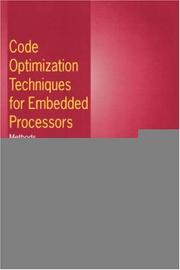
ISBN: 0792379896 9780792379898 1441950109 1475731698 Year: 2000 Publisher: Boston: Kluwer,
Abstract | Keywords | Export | Availability | Bookmark
 Loading...
Loading...Choose an application
- Reference Manager
- EndNote
- RefWorks (Direct export to RefWorks)
The building blocks of today's and future embedded systems are complex intellectual property components, or cores, many of which are programmable processors. Traditionally, these embedded processors mostly have been pro grammed in assembly languages due to efficiency reasons. This implies time consuming programming, extensive debugging, and low code portability. The requirements of short time-to-market and dependability of embedded systems are obviously much better met by using high-level language (e.g. C) compil ers instead of assembly. However, the use of C compilers frequently incurs a code quality overhead as compared to manually written assembly programs. Due to the need for efficient embedded systems, this overhead must be very low in order to make compilers useful in practice. In turn, this requires new compiler techniques that take the specific constraints in embedded system de sign into account. An example are the specialized architectures of recent DSP and multimedia processors, which are not yet sufficiently exploited by existing compilers.
Embedded computer systems --- Systèmes enfouis (Informatique) --- Programming --- Programmation --- -Embedded systems (Computer systems) --- Computer systems --- Architecture Analysis and Design Language --- -Programming --- Systèmes enfouis (Informatique) --- Computer-aided engineering. --- Electrical engineering. --- Special purpose computers. --- Computer-Aided Engineering (CAD, CAE) and Design. --- Electrical Engineering. --- Special Purpose and Application-Based Systems. --- Special purpose computers --- Computers --- Electric engineering --- Engineering --- CAE --- Data processing --- Embedded computer systems - Programming
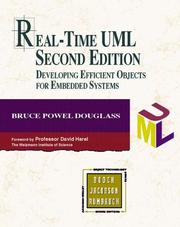
ISBN: 0201657848 Year: 2000 Publisher: Boston (Mass.) : Addison-Wesley,
Abstract | Keywords | Export | Availability | Bookmark
 Loading...
Loading...Choose an application
- Reference Manager
- EndNote
- RefWorks (Direct export to RefWorks)
Programming --- UML (unified modeling language) --- embedded systems --- Temps réel --- Embedded computer systems --- Object-oriented methods (Computer science). --- Real-time data processing. --- Programming. --- Real-time data processing --- Object-oriented methods (Computer science) --- Systèmes enfouis (Informatique) --- Méthode orientée object (Informatique) --- Programmation
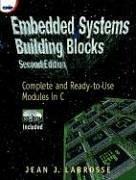
ISBN: 0879306041 Year: 2000 Publisher: Lawrence CMP Books
Abstract | Keywords | Export | Availability | Bookmark
 Loading...
Loading...Choose an application
- Reference Manager
- EndNote
- RefWorks (Direct export to RefWorks)
Embedded computer systems --- C (Computer program language) --- Systèmes enfouis (Informatique) --- C (Langage de programmation) --- embedded system --- real time processing --- led display --- lcd --- os 2 --- -computer --- Systèmes enfouis (Informatique) --- 681.3*C3 --- 681.3*J7 --- Architecture Analysis and Design Language --- Special-purpose and application-based systems: microprocessor/microcomputer; process control-, real-time, signal processing systems (Computer systems organization)--See also {681.3*J7} --- Computers in other systems: command and control; consumer products; industrial control; process control; publishing; real time--See also {681.3*C3} --- 681.3*J7 Computers in other systems: command and control; consumer products; industrial control; process control; publishing; real time--See also {681.3*C3} --- 681.3*C3 Special-purpose and application-based systems: microprocessor/microcomputer; process control-, real-time, signal processing systems (Computer systems organization)--See also {681.3*J7} --- Embedded systems (Computer systems) --- Computer systems --- Programming --- C (informatica) --- embedded systems
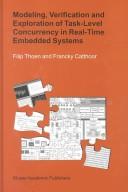
ISBN: 0792377370 1461369983 1461544378 Year: 2000 Publisher: Boston (Mass.) : Kluwer academic,
Abstract | Keywords | Export | Availability | Bookmark
 Loading...
Loading...Choose an application
- Reference Manager
- EndNote
- RefWorks (Direct export to RefWorks)
system is a complex object containing a significant percentage of elec A tronics that interacts with the Real World (physical environments, humans, etc. ) through sensing and actuating devices. A system is heterogeneous, i. e. , is characterized by the co-existence of a large number of components of disparate type and function (for example, programmable components such as micro processors and Digital Signal Processors (DSPs), analog components such as AID and D/A converters, sensors, transmitters and receivers). Any approach to system design today must include software concerns to be viable. In fact, it is now common knowledge that more than 70% of the development cost for complex systems such as automotive electronics and communication systems are due to software development. In addition, this percentage is increasing constantly. It has been my take for years that the so-called hardware-software co-design problem is formulated at a too low level to yield significant results in shorten ing design time to the point needed for next generation electronic devices and systems. The level of abstraction has to be raised to the Architecture-Function co-design problem, where Function refers to the operations that the system is supposed to carry out and Architecture is the set of supporting components for that functionality. The supporting components as we said above are heteroge neous and contain almost always programmable components.
Embedded computer systems. --- Real-time data processing. --- Systèmes enfouis (Informatique) --- Temps réel --- Systèmes enfouis (Informatique) --- Temps réel --- Embedded computer systems --- Real-time data processing --- Fast-response data processing --- High-speed data processing --- Electronic data processing --- Embedded systems (Computer systems) --- Computer systems --- Architecture Analysis and Design Language --- Computer-aided engineering. --- Special purpose computers. --- Electrical engineering. --- Computer-Aided Engineering (CAD, CAE) and Design. --- Special Purpose and Application-Based Systems. --- Electrical Engineering. --- Electric engineering --- Engineering --- Special purpose computers --- Computers --- CAE --- Data processing
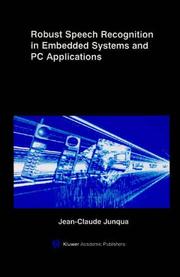
ISBN: 1280206268 9786610206261 0306470276 0792378733 Year: 2000 Publisher: Boston, MA : Kluwer Academic Publishers,
Abstract | Keywords | Export | Availability | Bookmark
 Loading...
Loading...Choose an application
- Reference Manager
- EndNote
- RefWorks (Direct export to RefWorks)
Robust Speech Recognition in Embedded Systems and PC Applications provides a link between the technology and the application worlds. As speech recognition technology is now good enough for a number of applications and the core technology is well established around hidden Markov models many of the differences between systems found in the field are related to implementation variants. We distinguish between embedded systems and PC-based applications. Embedded applications are usually cost sensitive and require very simple and optimized methods to be viable. Robust Speech Recognition in Embedded Systems and PC Applications reviews the problems of robust speech recognition, summarizes the current state of the art of robust speech recognition while providing some perspectives, and goes over the complementary technologies that are necessary to build an application, such as dialog and user interface technologies. Robust Speech Recognition in Embedded Systems and PC Applications is divided into five chapters. The first one reviews the main difficulties encountered in automatic speech recognition when the type of communication is unknown. The second chapter focuses on environment-independent/adaptive speech recognition approaches and on the mainstream methods applicable to noise robust speech recognition. The third chapter discusses several critical technologies that contribute to making an application usable. It also provides some design recommendations on how to design prompts, generate user feedback and develop speech user interfaces. The fourth chapter reviews several techniques that are particularly useful for embedded systems or to decrease computational complexity. It also presents some case studies for embedded applications and PC-based systems. Finally, the fifth chapter provides a future outlook for robust speech recognition, emphasizing the areas that the author sees as the most promising for the future. Robust Speech Recognition in Embedded Systems and PC Applications serves as a valuable reference and although not intended as a formal University textbook, contains some material that can be used for a course at the graduate or undergraduate level. It is a good complement for the book entitled Robustness in Automatic Speech Recognition: Fundamentals and Applications co-authored by the same author.
Embedded computer systems. --- Automatic speech recognition. --- Microcomputers. --- Electronics. --- Computer engineering. --- Computer science. --- Electronics and Microelectronics, Instrumentation. --- Electrical Engineering. --- Computer Science, general. --- Signal, Image and Speech Processing. --- Microelectronics. --- Electrical engineering. --- Signal processing. --- Image processing. --- Speech processing systems. --- Computational linguistics --- Electronic systems --- Information theory --- Modulation theory --- Oral communication --- Speech --- Telecommunication --- Singing voice synthesizers --- Pictorial data processing --- Picture processing --- Processing, Image --- Imaging systems --- Optical data processing --- Processing, Signal --- Information measurement --- Signal theory (Telecommunication) --- Informatics --- Science --- Electric engineering --- Engineering --- Microminiature electronic equipment --- Microminiaturization (Electronics) --- Electronics --- Microtechnology --- Semiconductors --- Miniature electronic equipment --- Electrical engineering --- Physical sciences --- Home computers --- Micro computers --- Micros (Microcomputers) --- PCs (Microcomputers) --- Personal computers --- Small computers --- Minicomputers --- Mechanical speech recognizer --- Speech recognition, Automatic --- Pattern recognition systems --- Perceptrons --- Speech, Intelligibility of --- Speech perception --- Speech processing systems --- Embedded systems (Computer systems) --- Computer systems --- Architecture Analysis and Design Language
| Listing 1 - 9 of 9 |
Sort by
|

 Search
Search Feedback
Feedback About UniCat
About UniCat  Help
Help News
News